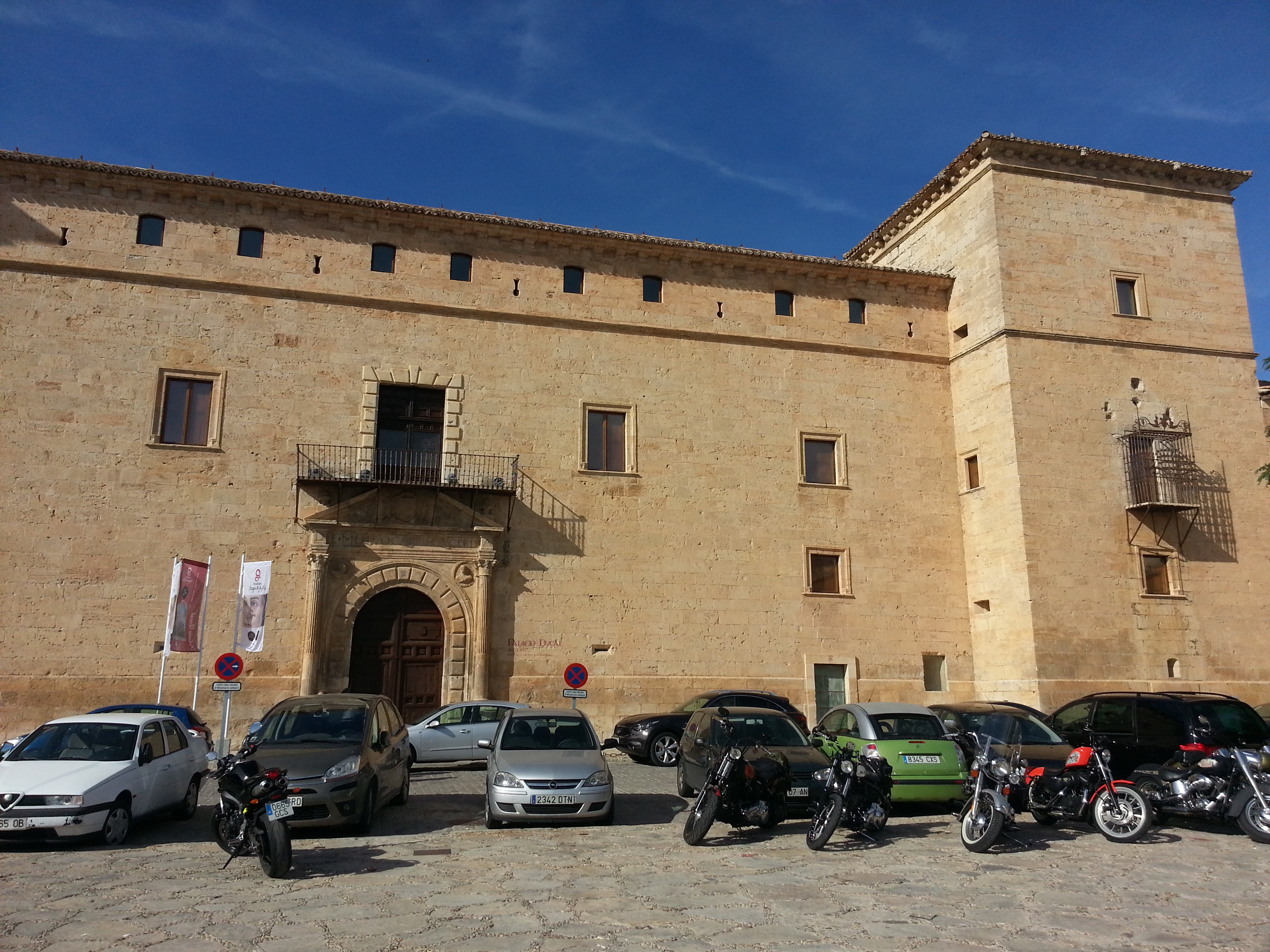
Recently I returned to a magnificent medieval Ducal town located between the Tajo and Tajuña Rivers in the Sierra of Guadalajara; Pastrana. It was first documented in manuscripts referring to the Visigothic town of Pastrana, mentioned by King Wamba (672-680) when he was drawing up boundaries for the Christian dioceses. However, its better-known history begins with Alfonso VII of Castile, who, in 1174, granted the town of Pastrana to the Order of Calatrava. The town belonged to this military order until 1541, when Charles I reclaimed it and granted it to Ana de la Cerda, widow of Diego de Mendoza, Count of Melito. In 1562, Philip II granted the title of Dukes of Pastrana to Ana de Mendoza, the legendary Princess of Eboli who spent her final years imprisoned in the Ducal Palace of Pastrana.
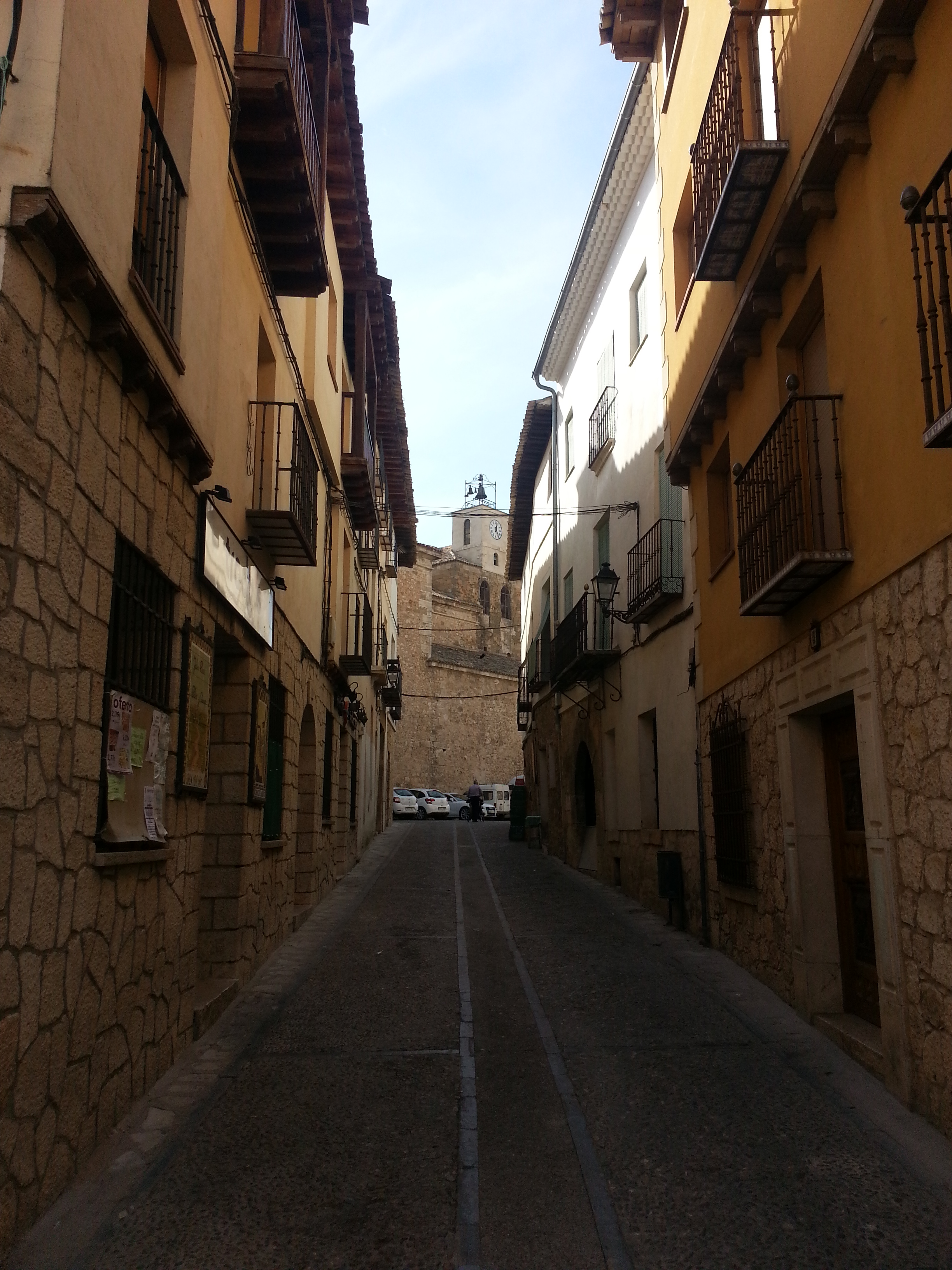 The years straddling the Renaissance and the Golden Age were ones of true splendour for Pastrana, thanks to the efforts of its noblemen, the visit by the mystic Teresa of Jesus, who founded convents in there, and the establishment of silk factories operated by Moors brought in from Andalusia who settled in an area today known as Albaicín.
The years straddling the Renaissance and the Golden Age were ones of true splendour for Pastrana, thanks to the efforts of its noblemen, the visit by the mystic Teresa of Jesus, who founded convents in there, and the establishment of silk factories operated by Moors brought in from Andalusia who settled in an area today known as Albaicín.
Pastrana’s historic quarter, which maintains its medieval layout, contains a large number of buildings of undeniable artistic quality and historical value. These include the Ducal Palace, constructed in the mid-16th century with a rectangular floor plan, which has an outstanding Renaissance doorway. The crypt of the Collegiate Parish Church of Our Lady of the Assumption (16th-17th century), adjacent to the original Gothic church of the Knights Templar, contains the remains of the Dukes of Melito and Pastrana. The church also contains the Parish Tapestry Museum, which has a collection of religious art and renowned Flemish tapestries that give the museum its name.
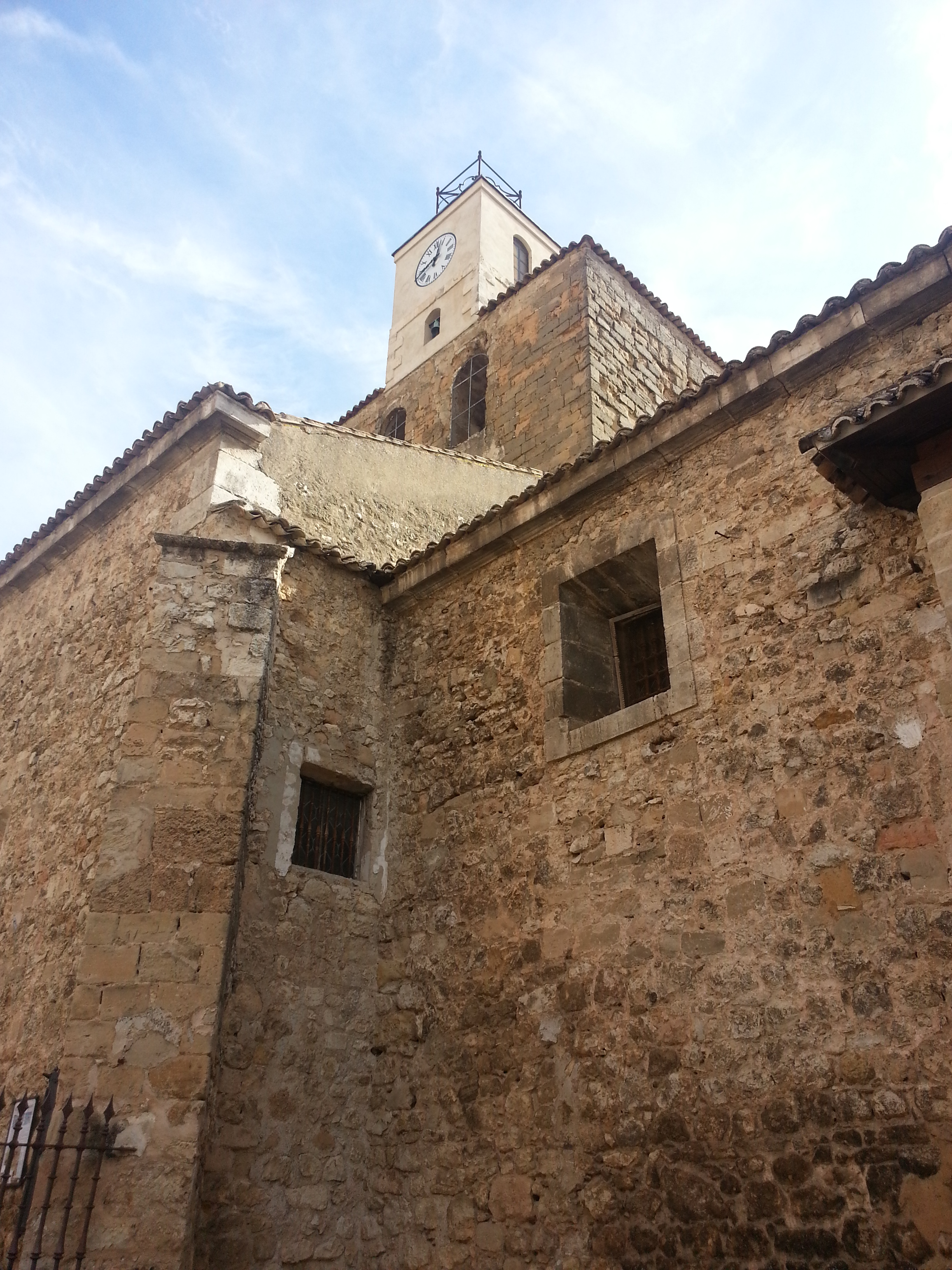
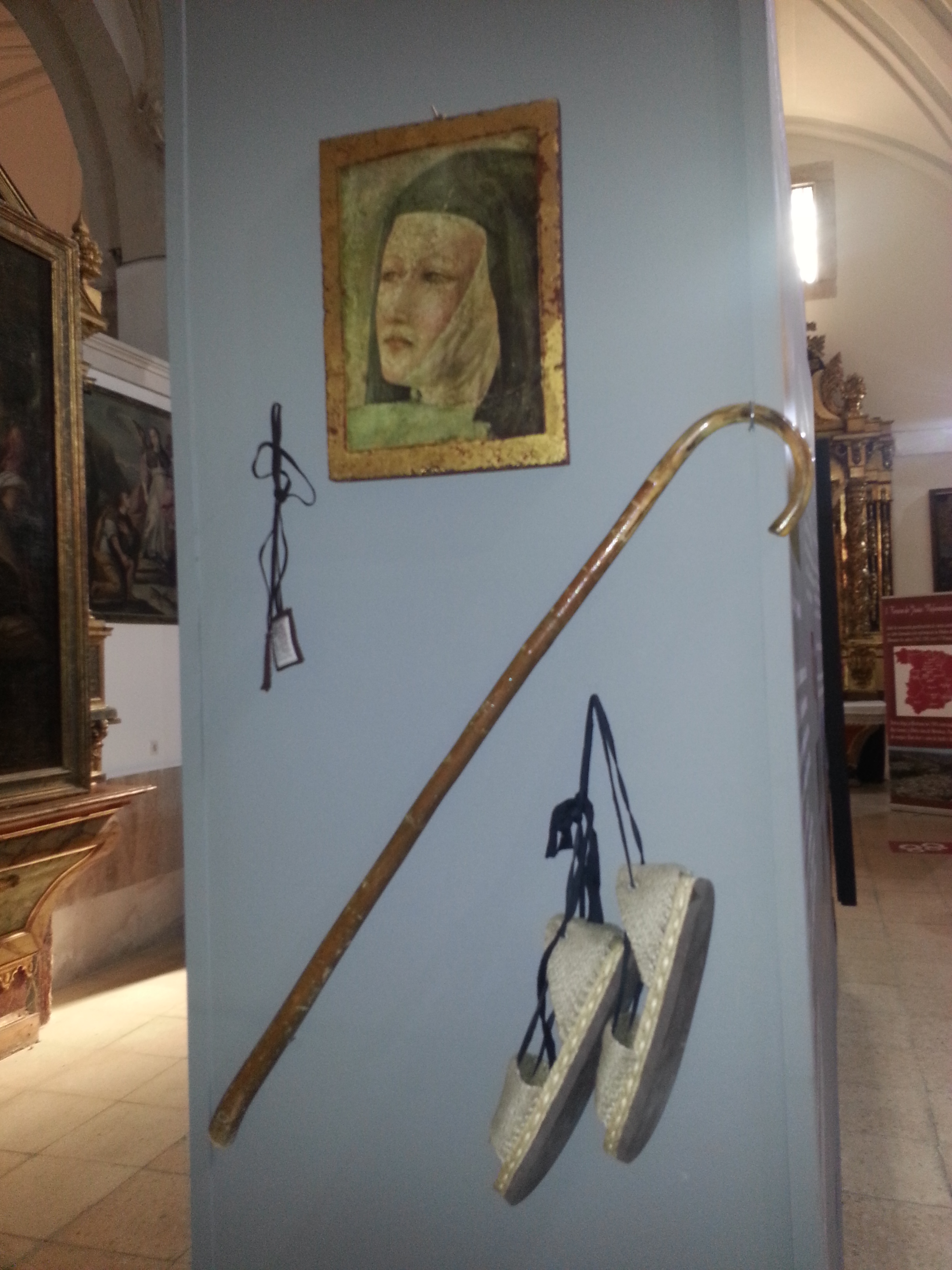
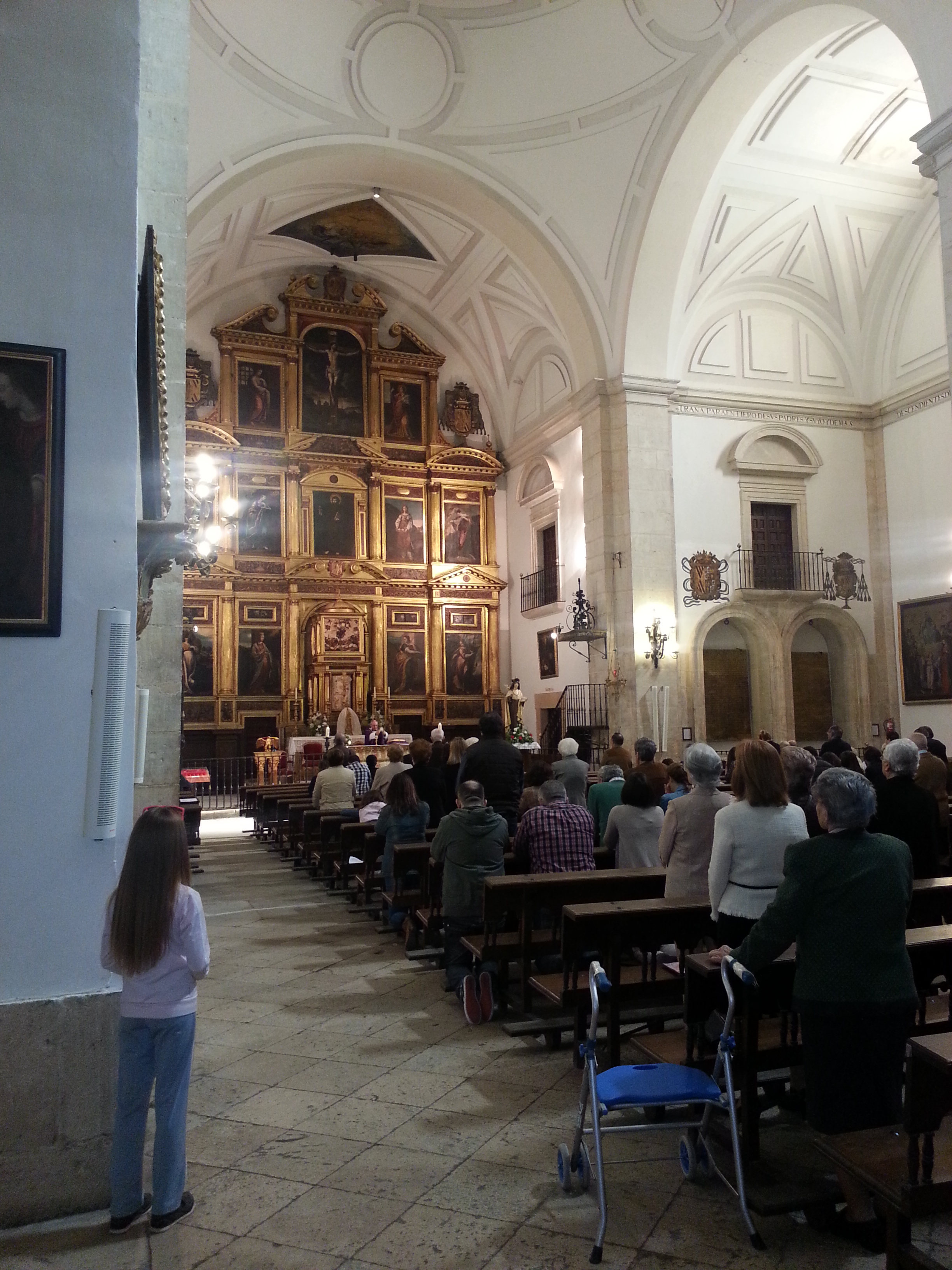
The Conceptionist Franciscan convent and the Convent of Carmel from 16th century, were founded by St. Teresa of Jesus. The latter houses, curiously, The Museum of Natural History of the Philippines and the Teresian Museum (or Carmelite and Religious Art Museum), dedicated to the founding saint and to another great saint and mystic, St. John of the Cross, who visited the town. Other buildings of interest are the College of St. Bonaventure built in 17th century, with its Baroque facade and patio, the remains of the old castle and walls built by the Knights Templar; the old quarter of the Albaicín, with its unusual layout, and several emblazoned palaces and manor houses from the 16th and17th centuries.
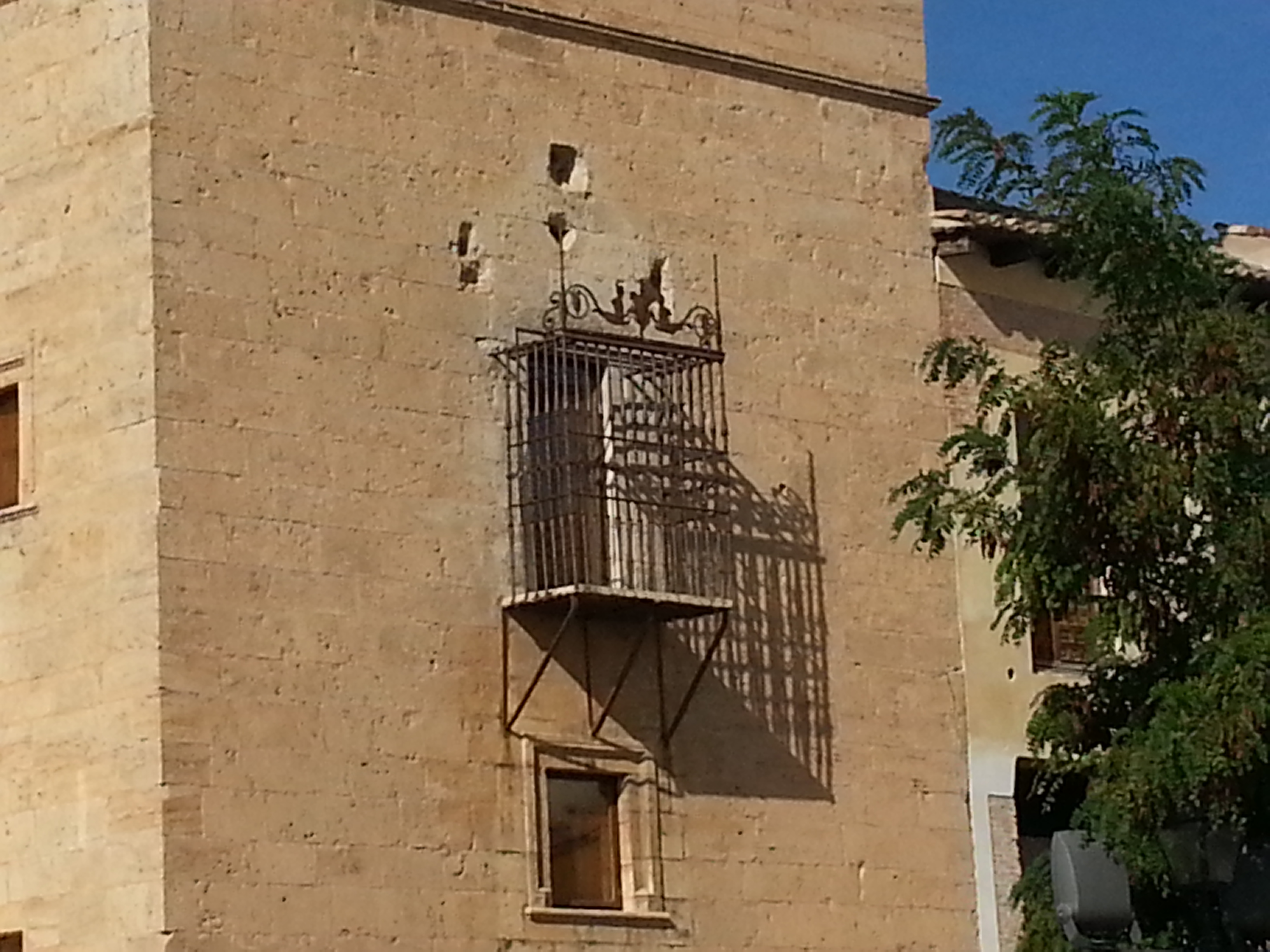
Alonso de Covarrubias designed the Ducal Palace of Pastrana and its doorway has a 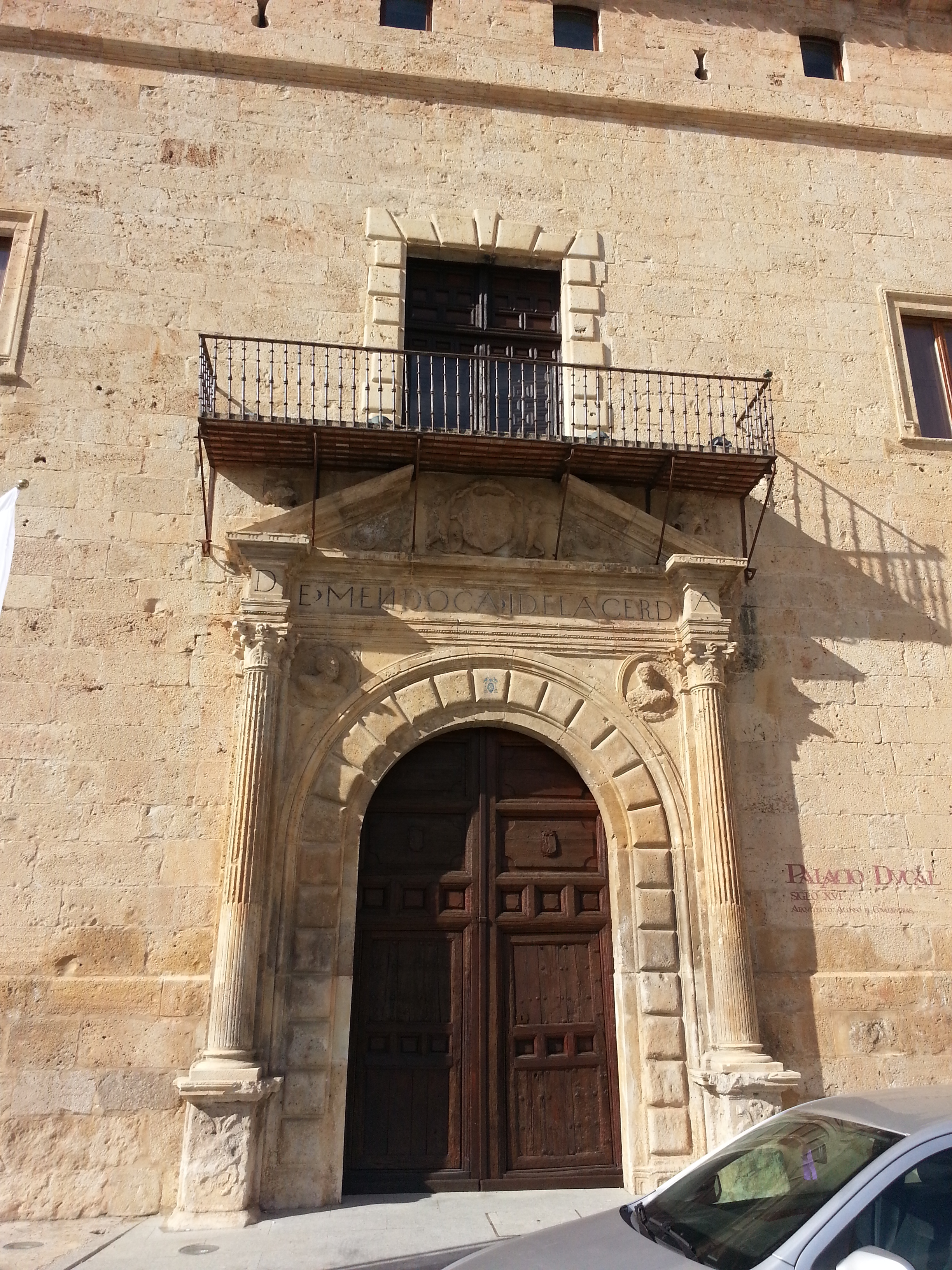 recognisable design feature, which is a reproduction of the one on the Alcázar fortress in Toledo. It stands beside the walls of Pastrana and has a parade ground at the front. The eastern tower, known as "the Chamber of the Golden Grille", was the site where the Princess of Eboli, Ana de Mendoza y de la Cerda, was held between 1581 and 1592 by order of Philip II. She was bricked in and imprisoned in her quarters along with her maid until she died, only being allowed to go outside for 1 hour per day. Going outside actually meant going out onto a caged balcony, which was in her room. The rest of the time she had to stay out of sight and in her quarters. It is thanks to the Princess of Ebolí that Pastrana is still a well-visited town today.
recognisable design feature, which is a reproduction of the one on the Alcázar fortress in Toledo. It stands beside the walls of Pastrana and has a parade ground at the front. The eastern tower, known as "the Chamber of the Golden Grille", was the site where the Princess of Eboli, Ana de Mendoza y de la Cerda, was held between 1581 and 1592 by order of Philip II. She was bricked in and imprisoned in her quarters along with her maid until she died, only being allowed to go outside for 1 hour per day. Going outside actually meant going out onto a caged balcony, which was in her room. The rest of the time she had to stay out of sight and in her quarters. It is thanks to the Princess of Ebolí that Pastrana is still a well-visited town today.
Doña Ana de Mendoza, the Princess of Éboli, was a woman full of historical intrigue and mystery. The fascination of her is fueled not only by her legendary beauty, courtly manipulations, and murderous plots, but also the mystery surrounding an alleged fencing accident and her eye patch. She has captivated attention for centuries, been immortalized in opera by Verdi, portrayed in Hollywood by Olivia de Haviland, and is the subject of numerous books and video productions. So who is Doña Ana de Mendoza and why did she wear an eye patch?
Born in 1540 into the powerful house of Mendoza, Doña Ana was the daughter of Diego Hurtado de Mendoza and Catherine de Silva. Doña Ana endured what appears to be a dysfunctional home life as a child, including the embarrassment of her father’s infamous philandering, something not accepted in 16th Century Spain. Little is known of Doña Ana’s childhood, but she was described as passionate, intelligent, religious, and rebellious in her youth. It is alleged that during her early adolescence, and prior to the development of safety equipment, she lost her right eye in a fencing duel with a page. In part, it appears the juxtaposition of her renowned beauty and her eye patch has fueled a mystique that has captivated admirers for centuries.
An early arranged marriage to Rui Gomez enabled Doña Ana’s presence in the court of King Philip II of Spain. Her husband’s wealth and influence provided for financial security and titles following the acquisition of estates in Eboli, located on Italy’s southeast coast. Her husband’s death and her subsequent relationship with Antonio Perez proved to be a fateful turning point for Doña Ana. Like her husband, Perez was a powerful insider in Philip II’s court. Perez brewed a plot of manipulation between the King and his half-brother involving a rebellion in Flanders and perhaps a move toward taking power in Portugal. 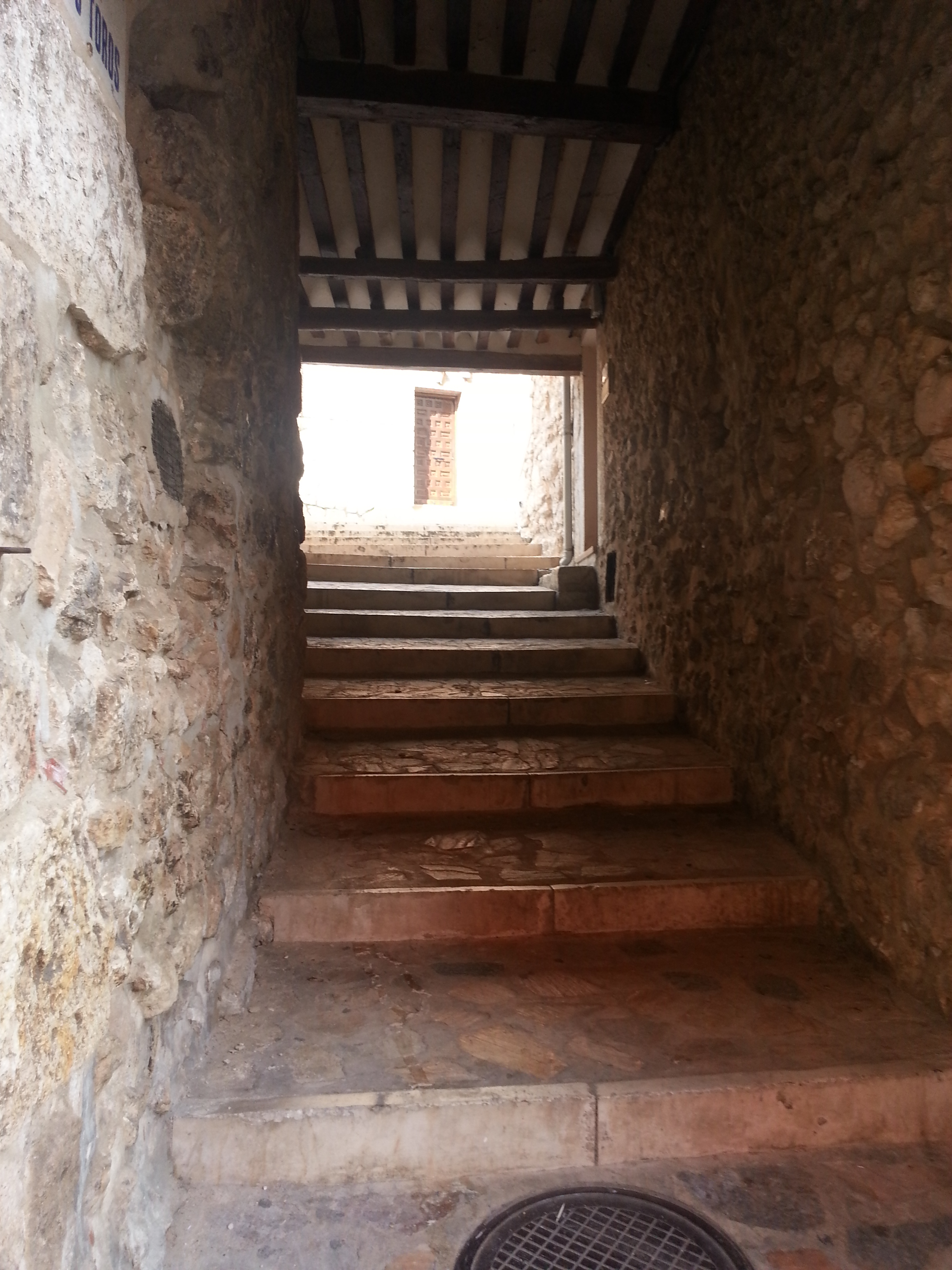 When a whiff of the plot was sensed, Perez orchestrated a murder to squelch its further discovery. Doña Ana said to have had involvement in the plot, was imprisoned by the King and subsequently stripped of parental rights and property. Some claim she was treated very harshly by the King, in part due to his sexual jealousy and sense of betrayal, but as with her eye patch, there is a dearth of supporting evidence for such claims. She would die sick, lonely, and imprisoned.
When a whiff of the plot was sensed, Perez orchestrated a murder to squelch its further discovery. Doña Ana said to have had involvement in the plot, was imprisoned by the King and subsequently stripped of parental rights and property. Some claim she was treated very harshly by the King, in part due to his sexual jealousy and sense of betrayal, but as with her eye patch, there is a dearth of supporting evidence for such claims. She would die sick, lonely, and imprisoned.
Numerous and widespread explanations for Doña Ana’s eye patch abound. They typically assert in a matter-of-fact fashion that Doña Ana lost her eye in a fencing accident, perhaps around the age of twelve. However, absolutely no evidence has come to light to support such claims. They appear to be the speculations of historians attempting to explain her portrait — assertions that have much more intrigue than the lesser-known speculations surrounding a horse accident while hunting around the age of fourteen.
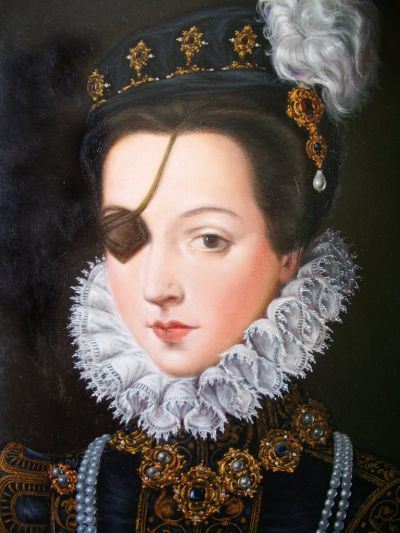
Under the advisement of King Philip II, she was betrothed at age twelve to a Portuguese nobleman, Rui Gomez da Silva, the King’s personal secretary and life-long courtier, who was 24 years her senior. A few years later, Rui and Doña Ana’s marriage would be consummated and she would go on to bear Rui their first of ten children. Like her husband, Doña Ana became well established in the court of King Philip II where she enjoyed a close relationship with Queen Elizabeth of Valois, the king’s third wife. It is during this time that some allege Doña Ana became the King’s mistress, but several scholars deny this. Whether fictional or otherwise, such allegations have helped fuel dramatic (and largely fictional) storylines on stage and screen, furthering Doña Ana’s mystique. At about this time, Doña Ana’s parents became further estranged, and her father left with another mistress.
Doña Ana’s husband, Rui Gomez, worked to secure their children’s future by purchasing the town of Eboli in Naples, as well as several villas. Rui was granted the title Duke of Pastrana and Grandee of Spain by Philip II in 1572. This established Doña Ana as the Princess of Eboli and the first Duchess of Pastrana. Her husband died the following year. Thus began a series of problematic and dramatic chapters in Doña Ana’s existence. In grief, Doña Ana and her mother moved to the convent in Pastrana.
A few years later, Doña Ana and her mother returned to Madrid against the Kings wishes. Not long after, her mother died, followed shortly thereafter by her father. However, her father, having married another in an attempt to secure a male heir, had left his second wife pregnant, threatening Doña Ana’s inheritance.
Doña Ana’s husband was succeeded by his protegé, Antonio Perez, as secretary to Philip II. Antonio Perez, only slightly older than Doña Ana, was a married man. Doña Ana established a close relationship with Perez, and again, adulterous allegations abound, but some claim their relationship was purely political. Their relationship was apparently hidden from the King. Historians are divided as to why that was the case with some claiming it was due to impropriety, while others claim it was due to Doña Ana’s renewed liaisons with the King. Regardless of truth, Doña Ana’s relationship with Perez deepens her intrigue in Spanish legend and serves as a turning point in her life and in Spain’s history.
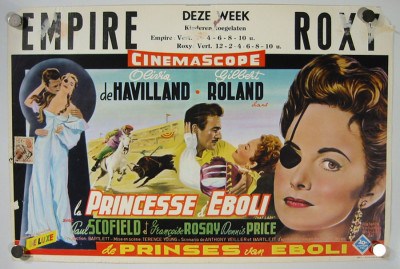
Perez, a trusted secretary to Philip II, became caught up in a revolt that developed in Flanders. The Duke of Alba and Don Juan of Austria (half-brother of Philip II) were intertwined with Perez in this revolt. Perez offered to serve as a mediator in the conflict, however, he was playing both sides. He altered state communiqués between the King and Don Juan and sold state secrets. Doña Ana was apparently aware of Perez’s treachery vis-à-vis their close relationship, evidenced by their visitations, and exchange of opulent gifts. Don Juan’s personal secretary, Juan de Escobedo, previously allied with Perez as his spy against Don Juan, turned against Perez and also discovered the relationship between Perez and Doña Ana. At this point, it is alleged that Perez 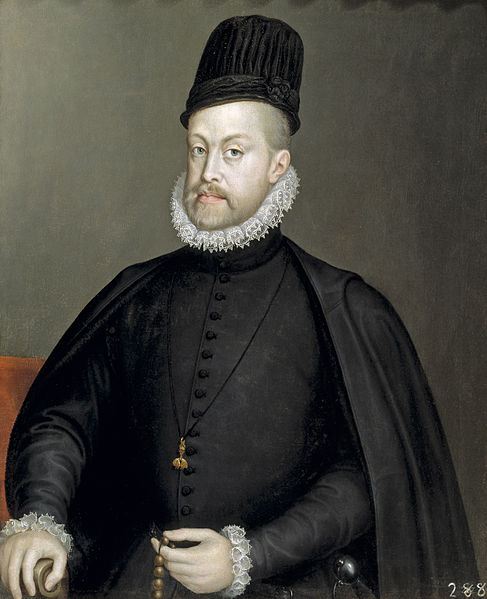 and Doña Ana conspire to assassinate Escobedo. Some historians assert that Doña Ana was not an active participant in the plot but was merely complicit. Though several more machinations in this operatic saga occur, Philip II (pictured) discovered the treachery of Perez and Doña Ana. Perez held off trial for several years, having somewhat assuaged Philip II with accusations of Don Juan’s pernicious intentions towards Philip’s throne.
and Doña Ana conspire to assassinate Escobedo. Some historians assert that Doña Ana was not an active participant in the plot but was merely complicit. Though several more machinations in this operatic saga occur, Philip II (pictured) discovered the treachery of Perez and Doña Ana. Perez held off trial for several years, having somewhat assuaged Philip II with accusations of Don Juan’s pernicious intentions towards Philip’s throne.
However, Doña Ana was placed under house arrest in 1581. The King stripped Doña Ana of her parental rights and property in 1582. This relatively harsh treatment of Doña Ana helps fuel allegations of the King’s sexual jealousy and romantic relations with Doña Ana. In 1589, ten years after the discovery, Perez was finally charged with the murder of Escobedo. This led to riots and unrest by Perez’s supporters. In 1590 Perez escaped to Aragon. Perez, in exile, published scathing, defamatory accounts of King Philip II’s court, assertions that went unchallenged, contributing to the Spanish Black Legend. Doña Ana, imprisoned for a decade, eventually died depressed and ill in 1592.